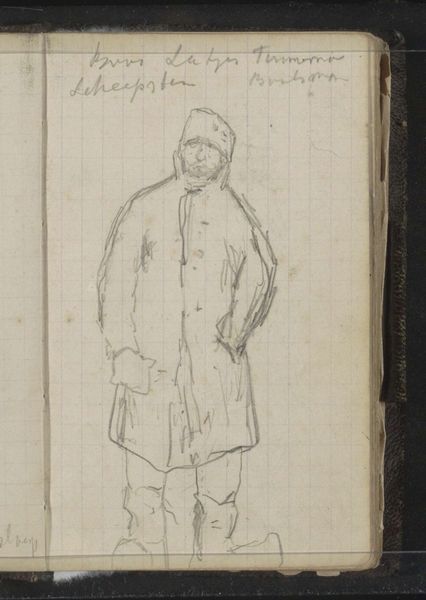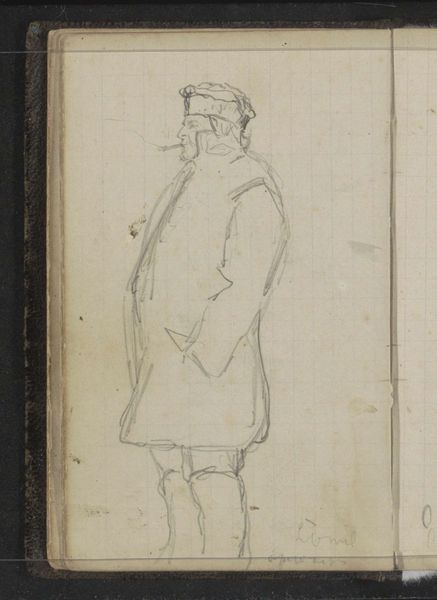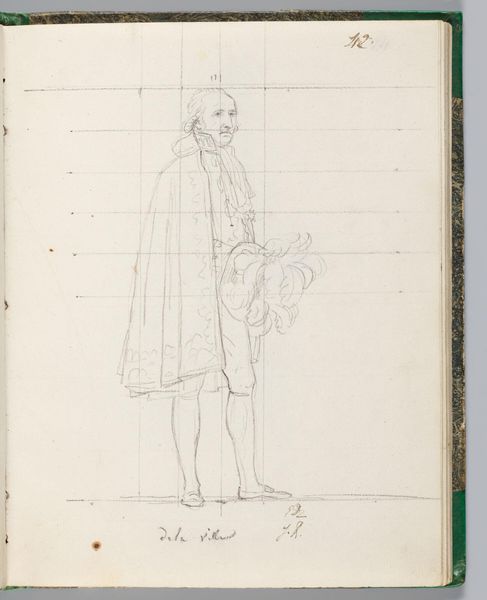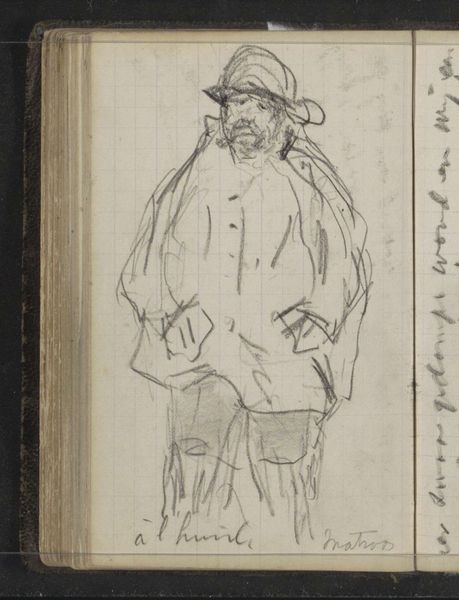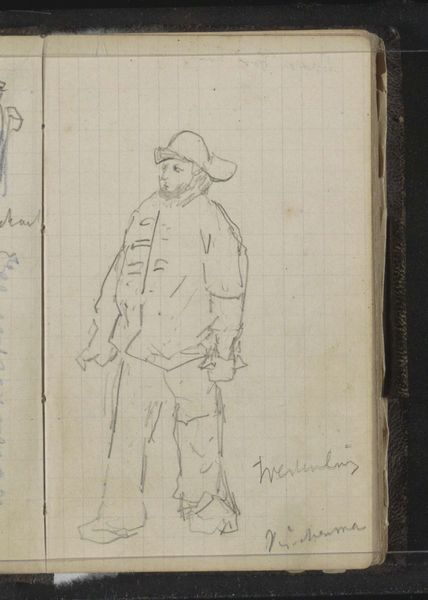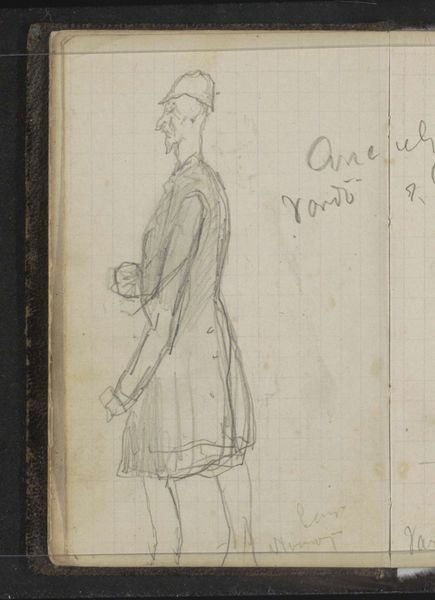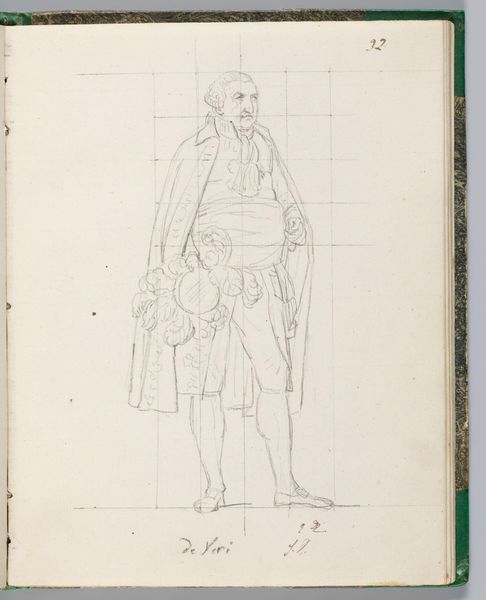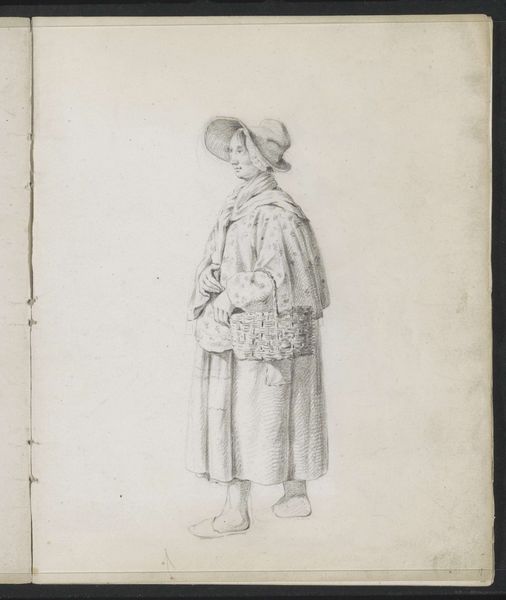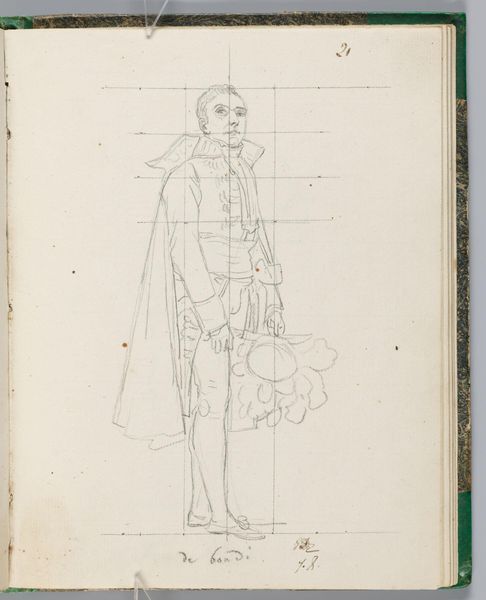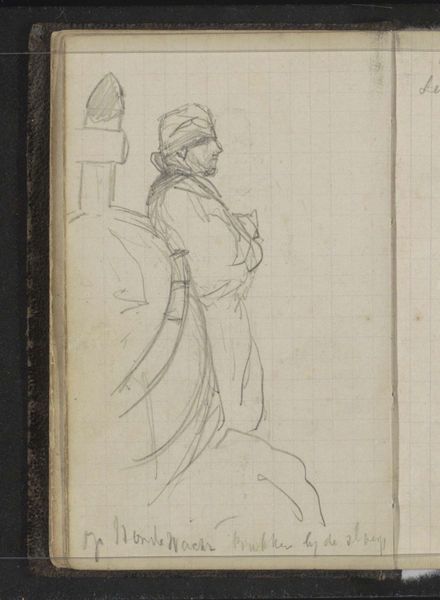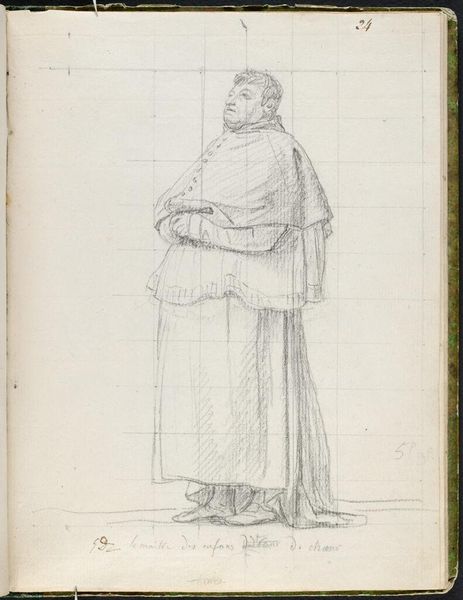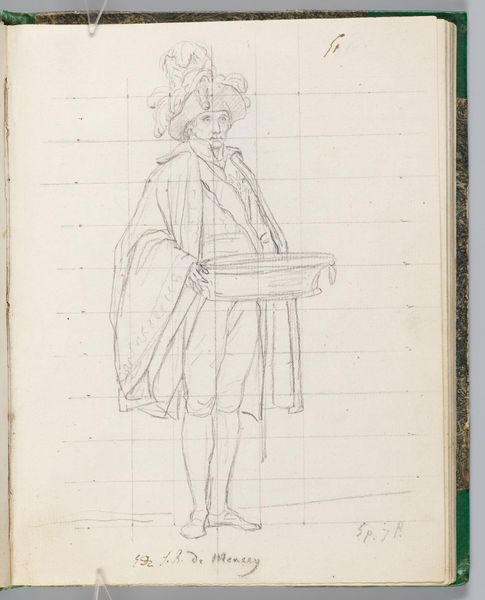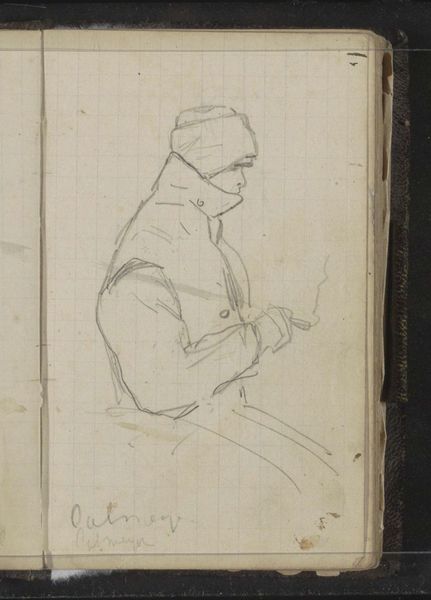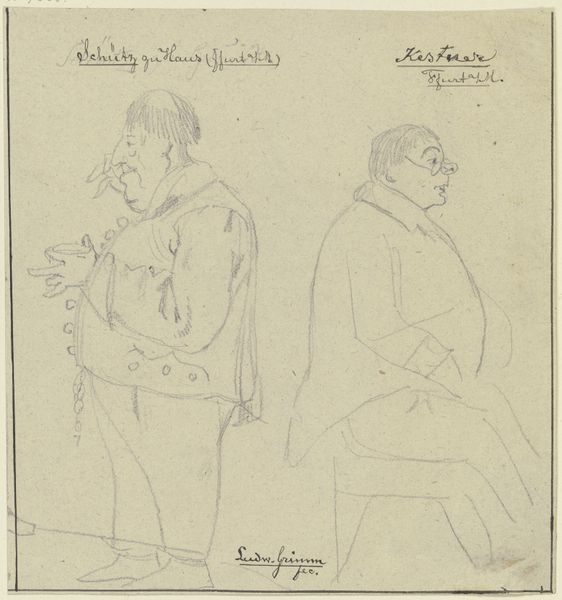
Scheepstimmerman Latjes van de Willem Barentsz op hondenwacht c. 1880 - 1886
0:00
0:00
drawing, paper, pencil
#
portrait
#
drawing
#
sketch book
#
paper
#
coloured pencil
#
pencil
Copyright: Rijks Museum: Open Domain
Louis Apol made this sketch of a ship's carpenter, or 'Scheepstimmerman', from the Willem Barentsz expedition. The drawing's linear quality, set against the grid of the paper, structures how we perceive this figure. Notice how Apol uses loose strokes to depict the carpenter’s form. These strokes not only give shape to his clothing and stature, but also communicate a sense of the environment – the harsh conditions of the voyage are palpable through the sketch's raw, unfinished quality. This rawness can be interpreted through a structuralist lens as a representation of the very real, and often brutal, intersection between man and nature. Also, consider the textual annotations that frame the drawing, as if part of a semiotic code. These elements disrupt traditional notions of representation and underscore how sketches function both as records and as dynamic sites of meaning. Apol’s drawing invites us to reflect on the complex interplay between the immediacy of observation, and the construction of historical and cultural narratives.
Comments
No comments
Be the first to comment and join the conversation on the ultimate creative platform.
